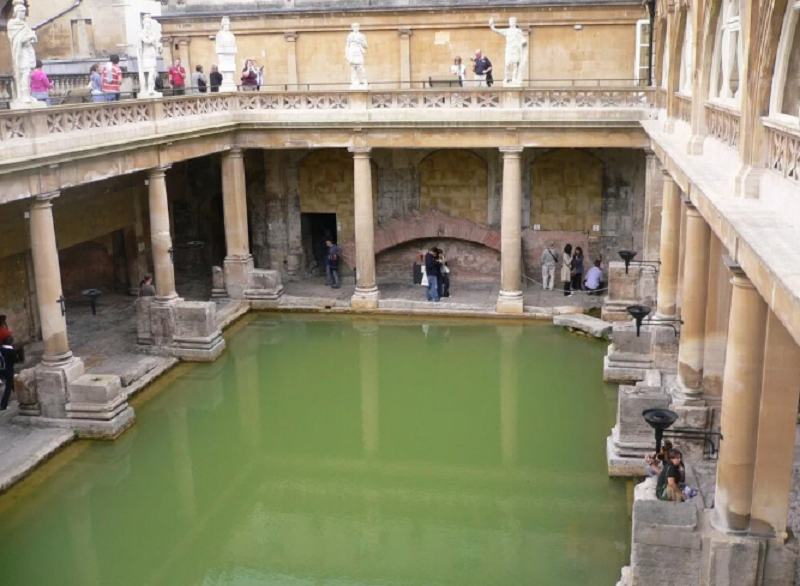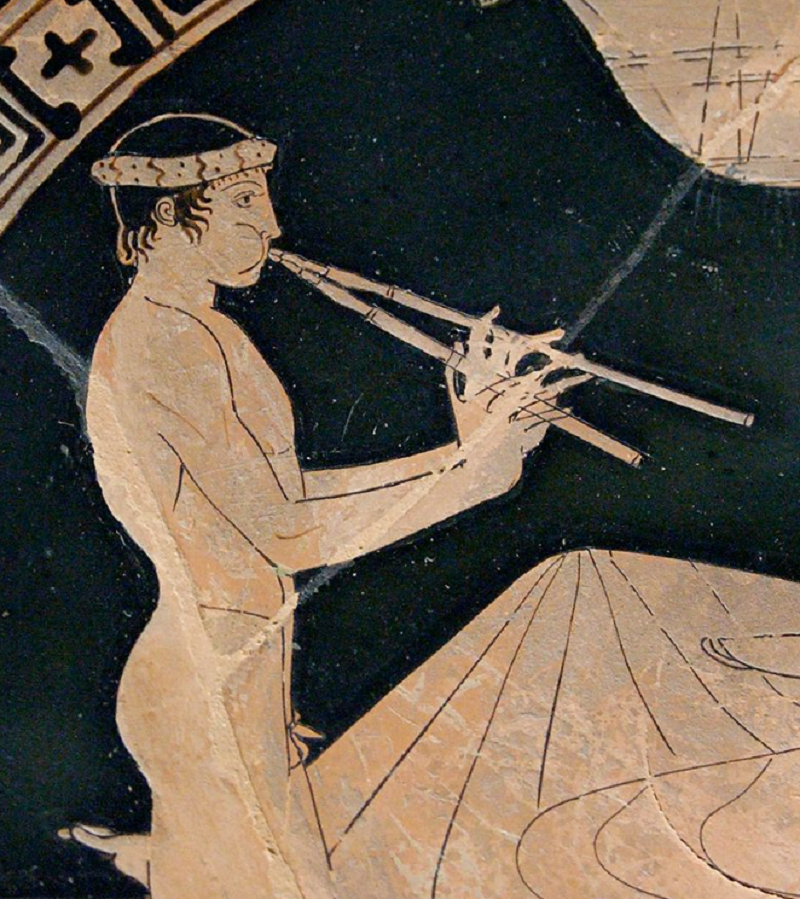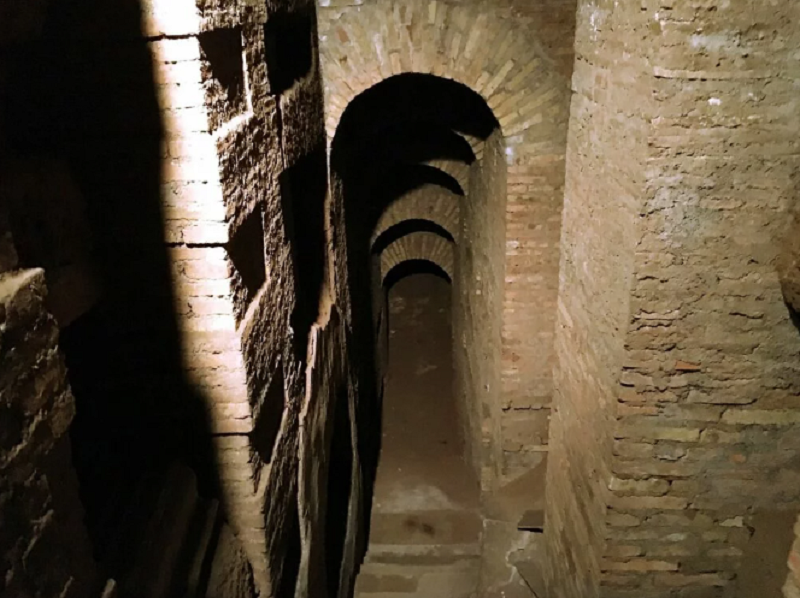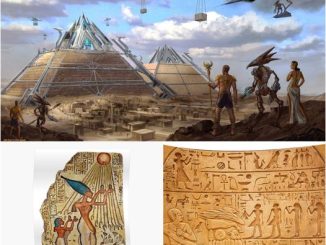11. Roman frescoes: A window into Roman aesthetics and life
Roman frescoes were colorful and elaborate wall paintings that decorated the interiors of Roman homes and public buildings. These frescoes provide valuable insights into Roman aesthetics, culture, and daily life. Scenes from mythology, landscapes, still lifes and portraits are popular subjects, creating a rich tapestry of visual storytelling.
Cubiculum (bedroom) from P. Fannius Synistor’s Villa at Boscoreale | Photo source: metmuseum.org
In the ancient city of Pompeii, the eruption of Mount Vesuvius in AD 79 preserved countless Roman frescoes with remarkable detail. Notable examples include the Mystery Mansion and the House of the Vettii. These frescoes provide insight into the tastes and preferences of Roman society, demonstrating their appreciation for art, beauty, and storytelling.
12. Trajan’s Column: Monument to victory and art
Trajan’s Column is a towering symbol of Roman victory and artistry. Erected in the early 2nd century AD to commemorate Emperor Trajan’s victorious campaigns in the Dacian Wars, this intricately carved column is a unique blend of historical and artistic records . It has a continuous frieze that spirals around the outside, depicting scenes from the Dacian Wars in remarkable detail.
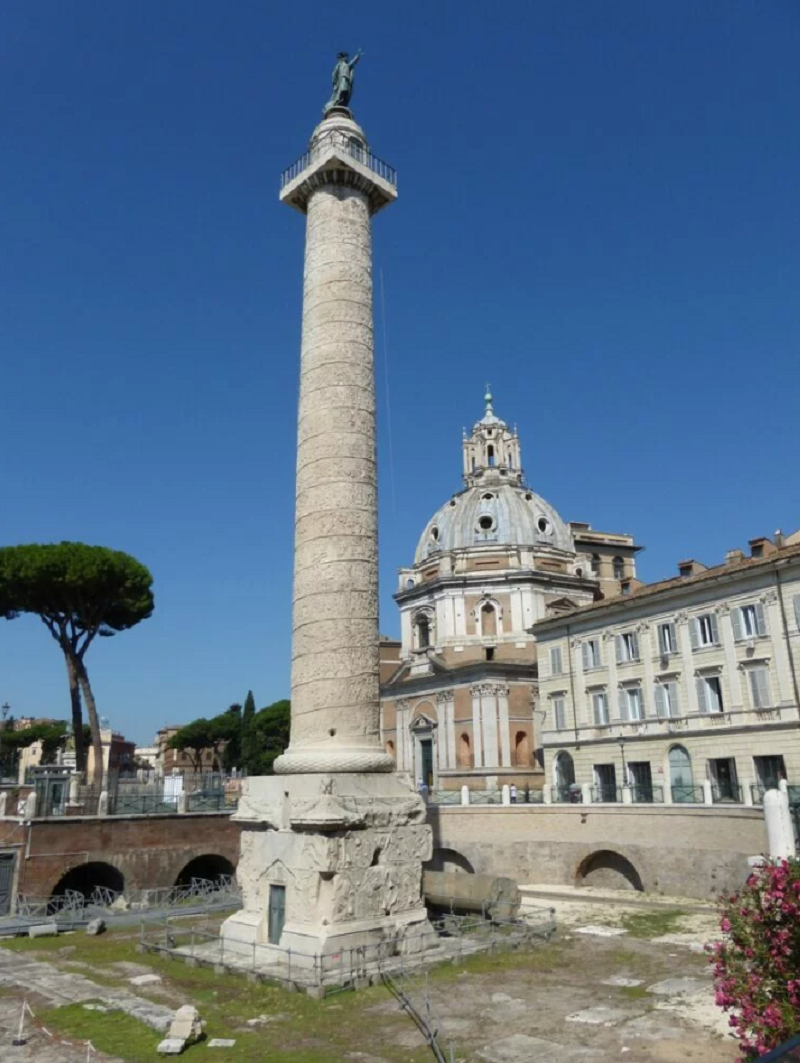
Trajan’s Column
The column’s artistic style and narrative reliefs were important achievements in Roman art and architecture. It allows us to witness the military campaigns, costumes, weapons and fortifications of those times. Trajan’s Column is not only a testament to the power and expansion of the Roman Empire but is also a masterpiece of ancient storytelling through sculpture.
13. Roman bust: Portrait on stone
Roman busts were sculpted portraits of famous figures, whether emperors, politicians, philosophers or influential citizens. These intricately carved statues are crafted from marble or bronze and are considered notable historical and artistic records. Roman sculptors were masters at capturing the nuances of individual character and expression.
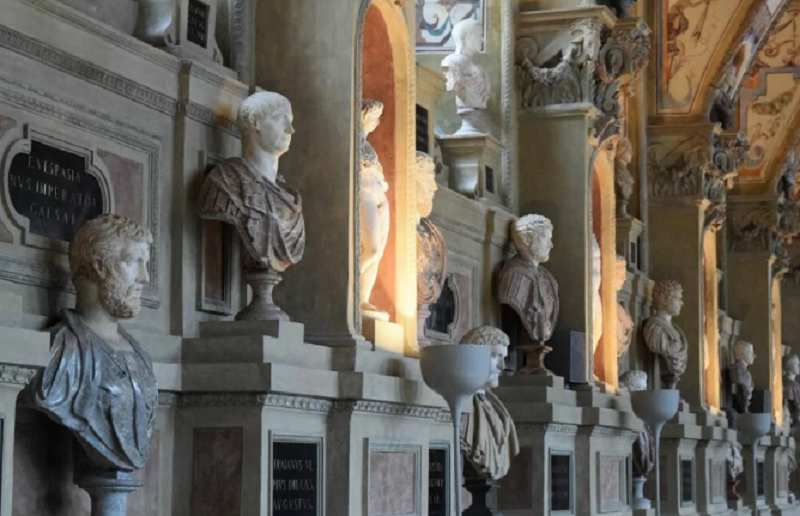
These busts played an important role in Roman culture by honoring and commemorating influential figures. Notable examples include the bust of Julius Caesar and the famous bust of Cleopatra. Roman busts allow us to connect with the faces and personalities of ancient Rome, providing a glimpse into the individuals who shaped the course of history.
14. Roman Baths: A Glimpse into Hygiene and Culture
Roman baths were indispensable in the daily life of ancient Romans and had great cultural significance. These baths served both practical and social purposes. Public and private baths demonstrate the Romans’ commitment to hygiene and health.
Public baths, such as the Baths of Caracalla, were monumental structures with thermal pools, saunas, and exercise areas. They are important social spaces, promoting interaction and relaxation. In contrast, private bathrooms in wealthy Roman homes exemplified luxury and sophistication.
Artifacts from Roman baths include bath architecture, heating systems, and bathing equipment such as strigils for cleansing the body. They provide insights into Roman hygiene practices and their appreciation for public and private recreation.
15. Roman inscriptions: Words engraved on stone
Roman inscriptions, carved in stone or cast in metal, provided a lasting way to convey information and record important events. These inscriptions range from monumental dedication plaques to smaller, everyday plaques. They produced texts in Latin or Greek and often conveyed detailed information about public works, legal decrees, and personal achievements.
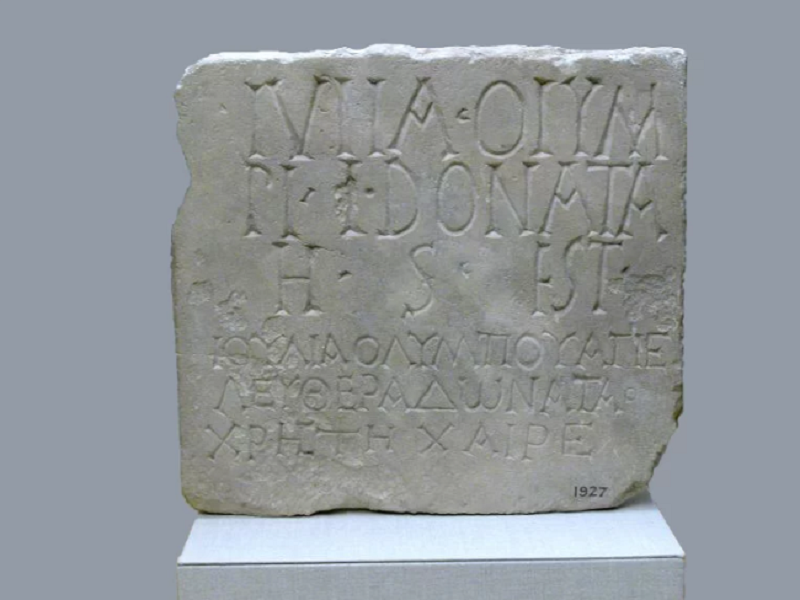
Limestone slab with bilingual inscription | Photo source: metmuseum.org
One of the most famous inscriptions is “Res Gestae Divi Augusti” (The Deeds of Divine Augustus), an autobiography of Emperor Augustus. It details his life, achievements, and the construction of many public buildings. These inscriptions are essential to understanding the politics, governance, and self-expression of the Roman elite.
16. Arch of Titus: Commemorating victory
The Arch of Titus is a triumphal arch in Rome, built to commemorate the military victory of Emperor Titus and his brother Domitian in the sack of Jerusalem in 70 AD. This monumental arch serves not only as an architectural masterpiece but also as a historical record of an important event in Roman history.
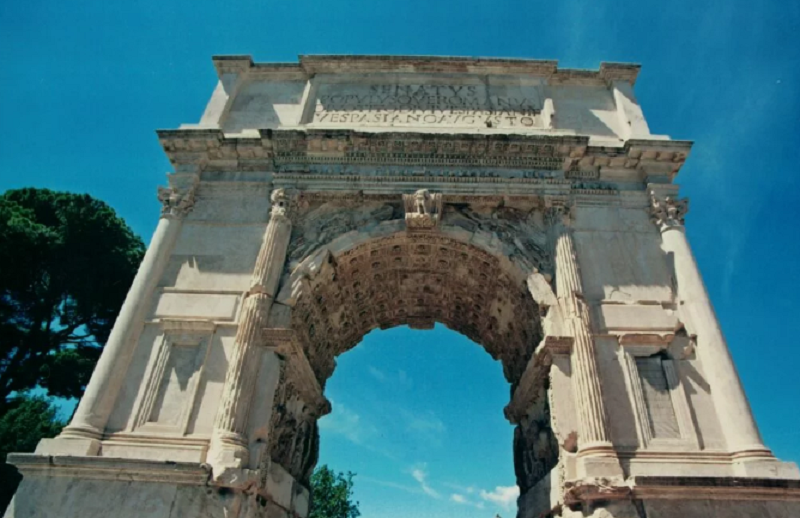
Arch of Titus
The arch features detailed relief sculptures depicting processions of Roman soldiers with booty from the Jewish Temple in Jerusalem. This artifact commemorates the military might and power of the Roman empire, and provides valuable insights into the cultural and religious aspects of the time.
17. Roman glassware: Fragile beauty and utility
Roman glassware is a testament to the artistry and craftsmanship of ancient Roman glassblowers. These exquisite glass vases and objects serve both functional and decorative purposes. Roman glassmakers were famous for their skill in creating intricate and colorful glassware.
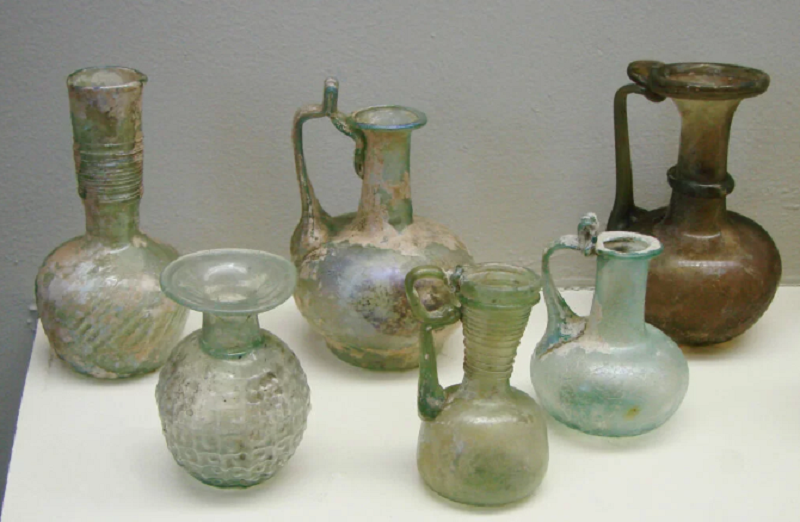
Roman glass from the 2nd century | Image source: Wikipedia
Roman glass objects include drinking vessels such as cups and goblets, decorative items such as perfume bottles and vases, and even window glass. What sets Roman glassware apart is its stunning variety of shapes, colors and patterns, demonstrating Roman innovation in glassmaking.
One of the most notable types of Roman glassware was “mosaic glass,” which had intricate multicolored patterns reminiscent of mosaic art. Roman glass artefacts provide insight into daily life, trade and artistic tastes of the time.
18. Roman Musical Instruments: Echoes of Antiquity
Roman musical instruments offer an aural glimpse into the ancient world. The lyre and aulos are among the most iconic musical instruments of the Roman period. The lyre, a stringed instrument resembling a small harp, is popular in private and public gatherings. Aulos, a double-reed wind instrument, is known for its use in various celebrations and performances.
Young people playing aulo | Image source: Wikipedia
These instruments are not only appreciated for their musical quality but also for their cultural and social significance. They played a role in religious ceremonies, entertainment, and even military events. Roman musical instruments such as the lyre and aulos offer a unique perspective on the sensory and artistic experiences of the time.
19. Roman Household Items: Daily Life in Ancient Rome
Roman household items included a variety of everyday items that made life in ancient Rome convenient and comfortable. These items include lighting, dining utensils, and furniture for a variety of purposes.
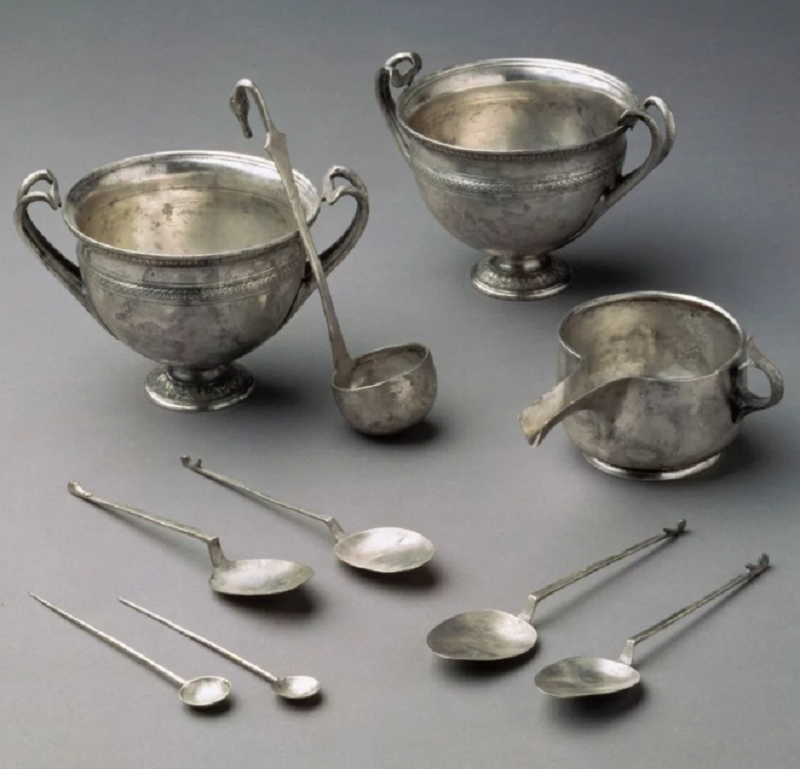
Silver cochlea (spoon), mid-1st century BC Roman | Photo source: metmuseum.org
For example, Roman oil lamps were not only a source of light but also had ornate designs and patterns, adding to the atmosphere of Roman homes. Utensils made from materials such as bronze and silver demonstrated the Romans’ commitment to both function and aesthetics. Furniture such as benches and tables are crafted with intricate details, serving both practical and decorative purposes.
These household artifacts provide insight into the daily rituals, family life and design sensibilities of the ancient Romans. They reflect the blend of form and function characteristic of Roman culture.
20. Roman Catacombs – Underground city of the dead
Roman catacombs were complex networks of underground burials, like underground cities of the dead. These catacombs, mostly located near Rome, served as the final resting place for early Christians during a time of religious persecution.
Ancient, Roman, Catacombs
They consist of a vast maze of tunnels, chambers and recesses carved into the soft volcanic rock. The catacombs are more than just burial places; they are also rich in artistic expression, with frescoes and inscriptions depicting early Christian iconography and beliefs.
The Roman Catacombs are historically significant in preserving early Christian history, culture, and religious practices. These underground complexes served as places of worship, burials, and refuges for persecuted Christians. Today, they offer a fascinating look at the ancient Christian community and their devotion in the face of adversity. Roman Catacombs represent a unique blend of faith, art and history hidden beneath the earth’s surface.
Conclusion
In short, artifacts from ancient Rome represent a diverse tapestry of history, culture and craftsmanship. From the grandeur of architectural marvels like the Colosseum and Trajan’s Column to everyday objects like lamps and utensils, these artifacts provide us with invaluable insights into life. and the achievements of the Romans.
Roman art, expressed through sculptures, frescoes, and glassware, demonstrates a deep appreciation for aesthetics and storytelling. Instruments such as the lyre and aulo provide echoes of ancient sounds, revealing the sensory experiences of the ancient Romans. The Roman Standard Measure, illustrated by the Roman Foot, symbolizes the meticulous precision that underpinned Roman engineering and construction.
Together these artifacts reveal the rich and diverse history of ancient Rome, a civilization that continues to fascinate us with its lasting influence on art, culture and innovation. . They serve as windows into a world where the grandeur of empires, the complexity of everyday life, and the beauty of art all converge, leaving an indelible mark in its progress. history.

